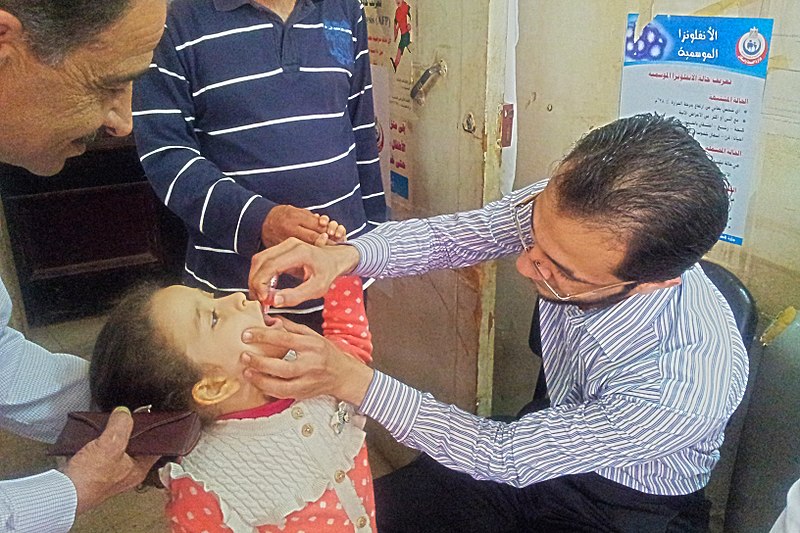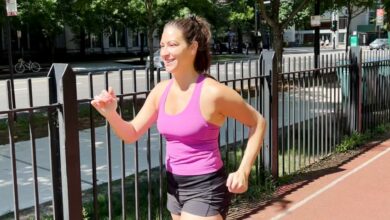Crowded streets, pollution and busy jobs can all add up to serious stress. Fortunately, there’s an all-too-easy way to calm yourself down: simply breathe.
The Maulana Azad Center for Indian Culture (MACIC) in Cairo teaches Hatha Yoga Pradipika, a Yogic technique for abdominal breathing said to lower blood pressure, increase oxygen intake and stimulate the parasympathetic nervous system–all of which can help you relax.
"The quality of air inhaled and the rate of breaths per minute will vary depending upon our physical, mental and emotional conditions, as well as our external environment," says Ajaya Kumar Sahoo, a yoga teacher at MACIC.
Sahoo says that most adults breathe at an average rate of 15 to 18 breaths per minute–or some 21,600 breaths each day. But, he says, individuals have the ability to enhance and control their breathing with what Sahoo calls "breath awareness."
"Simply observe," he says. "Consciously focus on your breathing without changing its pattern, without altering the natural flow of your breath, and notice how it moves in your abdomen and torso, how it feels in and out of your nose, its quality and temperature."
This kind of daily observation can keep breathing slow and deep. Simply keeping track of breathing for a few minutes can have a surprisingly positive effect on energy levels and mood.
"The quality of our breath influences the state of our minds and vice-versa. Breathing properly regulates your breath and will help establish a rhythm in your system. This includes brain rhythms, heartbeat and muscle, mental, emotional, hormonal, enzymatic, sleep and wakefulness rhythms," says Sahoo, pointing out that humans expel roughly 30 percent their toxin intake in the bathroom–the rest comes out via the respiratory system.
Babies breathe from their abdomen in a deep, natural rhythm, while adults tend to breathe more rapidly, from the chest. According to Sahoo, proper breathing is like that of a healthy baby sleeping.
Most adults expand only a limited portion of the torso when they breathe, generally in the front around the lower ribs and upper belly. Often, breathing is restricted and shallow. Ideally, it should be deep and full so that each breath cycle expands and contracts the height, width and depth of the whole torso.
The yoga breathing technique taught at MACIC, which stretches the movement of the diaphragm from one to three or four centimeters while moving up and down, is highly recommended.
"In normal unconscious breathing, only a small volume–some 350ml of fresh air–actually enters the alveolar in the lungs with each breath," says Sahoo. "In conscious yoga breathing, a much larger quantity of air–up to 5 liters–reaches the lungs and inflates more alveolar tissues."
The increase of oxygen reaches the brain and muscles, quickly stimulating the nervous system, promoting positive energy, and reducing tension.
Everybody can do the following exercise but as a rule, Sahoo warns, never overdo it. If you begin to feel uncomfortable, go back to your everyday breath. It is recommended to learn breathing from a qualified teacher.
- Lie on your back with hands and feet apart. Allow the whole body to relax completely. Close your eyes, relax and become aware of your natural breath, without modifying it in any way. Follow each movement of breath consciously for five minutes.
- When the breathing becomes very subtle and slow, place one hand on the front of the abdomen on the naval. This is to indicate to you that your abdomen does indeed move up and down. Inhale slowly by allowing your abdomen to expand fully.
- Try to breathe slowly and deeply so that little or no sound can be heard from the breath. Feel the air reaching into the bottom of the lungs. Imagine that you have a red balloon in your stomach. With each inhalation, imagine that this red balloon is being filled with air and is growing larger.
- When you have breathed in fully and the imaginary balloon is full, pretend you are pinching the neck of the balloon with your figures so the air doesn’t come out. Hold your breath for a second or two. There should be no jerking or unnecessary strain; breathing should be like the swell of the sea. The rest of the body should be relaxed.
- Breathe out slowly and completely. Imagine releasing your fingers from the imaginary balloon and allow the air to leave at the same time that you breathe out.
- As you breathe out, feel your abdomen contract. Without straining, try to empty the lungs as much as possible by drawing or pulling the abdominal wall towards your spine. Hold the breath for a second or two.
- Repeat the entire process.
"Continue this practice ten to 20 times or more if time permits," says Sahoo. "With practice, you will find the whole movement natural, and no effort will be required. Once you have mastered it in Shavasana (lying down), practice it in the sitting position." With just a few minutes of this concentrated breathing each day, you will be on your way to a happier, healthier, and less stressful life.




